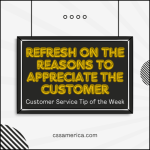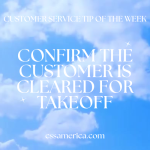
I’m dating myself here, but do you know the 1970’s song “Baby Come Back” by Player? If not, think about the Swiffer sweeper commercials where a mop or broom sings the song to a customer who has converted to Swiffer – the mop’s competitor.
Even if the song still doesn’t ring a bell, think about these lyrics:
Baby come back, any kind of fool could see
There was something in everything about you
Baby come back, you can blame it all on me
I was wrong, and I just can’t live without you
The mop lost a customer. He was heartbroken, and he wanted her back.
What’s the customer service lesson from the song? It’s this: Never let customers – even those that are lost – become a prospect. You worked too hard, too long to gain the customer and develop a relationship, so there should be some pain in the loss. But don’t let those hurt feelings or the hurt bottom line cause you to fully cut off communications with past customers. Instead, take these three actions with lost customers.
First, find out specifically why they left. You can assume, but if you want to know the true reason, then ask. Whether it’s through Exit Interviews or less formal means, identify the true reasons to apply those lessons to existing clients and operations.
Second, convey your interest in continuing communications with them. Even if all you say is “If it’s okay, I’ll plan to touch base with you every few months just to check in and see how you’re doing” or “If I come across something that might be of interest to you, I’ll send it your way.”
Third, keep the relationship warm. Create a Former Client Touch Point Plan, where every 2-6 months (based on the industry and customer type), you send them some information that may be of interest to them, something about a change or improvement in your company, or something of value to them.
I’m not suggesting that you spend undue resources on customers who’ve left; rather I’m simply suggesting that you never let those relationships go stale.
Don’t let lost customers become prospects. Adopt the mantra “Baby Come Back.”
Signup for FREE Tips! Contact Us More Resources for You Visit Our Home Page























